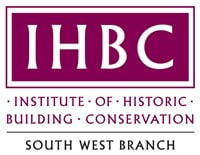Damp, Timber Decay and Sustainability Conference
In May 2021, we hosted a virtual conference on moisture in timber. For conservation professionals, the association of damp with timber decay needs no introduction. This is the familiar consequence of poor maintenance and ill-considered alterations. However, the need to reduce heat loss and carbon emissions is posing new challenges for the management of moisture in older buildings. A roof structure, for example, will become colder if heat transfer from the rooms below is reduced, leading to greater risk of condensation, mould growth and timber decay. Ventilation may not always be beneficial.
In this virtual conference, which was held on two consecutive Tuesdays, leading conservation specialists reviewed recent research and explored best practice. The first session focussed on building environments, including Historic England’s latest research. The second considered options for treating and repairing decayed timber.
You can listen to recordings of the conference presentations by clicking on the links below. These presentations will be of interest to building conservation professionals including conservation officers, architects and surveyors.
For the best experience, please use Google Chrome browser or download Adobe Connect.
Retrofits and timber decay: The impacts of retrofit measures on moisture levels in timber and an overview of recent Historic England research.
View 'Retrofits and timber decay: The impacts of retrofit measures on moisture levels in timber and an overview of recent Historic England research'. Presented by Morwenna Slade, Historic England.
Morwenna Slade is a chartered building surveyor and Head of Historic Building Climate Change Adaptation at Historic England. Before joining Historic England, she worked for the National Trust and the Churches Conservation Trust.
Moisture in timber roofs: principles and effects of modern practices on moisture levels in timber roofs and floors.
View 'Moisture in timber roofs: principles and effects of modern practices on moisture levels in timber roofs and floors'. Presented by Bill Bordass.
Dr Bill Bordass is a research and policy advisor with a background in physical chemistry, building design and environmental engineering. He has particular interest in monitoring environmental and energy performance and occupant satisfaction, investigating technical problems, and using the results to inform briefing, design and management and in due course policy. He has worked on a number of projects for Historic England including roofspace environments, moisture, and the risks and benefits of energy retrofits.
Buildings pathology: investigating sources of moisture and recognising the evidence of fabric failures.
View Buildings pathology: investigating sources of moisture and recognising the evidence of fabric failures. Presented by Bob Hill, Historic Buildings Advisory Service.
Bob Hill is a chartered building surveyor and building archaeologist with over 50 years experience in this sector. He is a director of Historic Building Advisory Service, a specialist consultancy service providing professional advice and services to the owners of historic buildings and structures across the UK. He runs seminars and gives lectures on many aspects of the historic built environment and sits on several national committees, but is at heart a traditional and practical hands-on surveyor.
Timber repairs: principles, methods and the selection of materials.
View 'Timber repairs: principles, methods and the selection of materials'. Presented by Joseph Bispham.
Dr Joseph Bispham served a five-year indentured apprenticeship as a carpenter and joiner. He has since built up a business specialising in the repair and conservation of historic timber buildings and is a member of the Institute of Materials. He runs historic joinery repair courses for the SPAB and others and is a member of the SPAB’s technical panel.
Are chemicals ever necessary? An overview of treatment options and health/safety issues
View 'Are chemicals ever necessary? An overview of treatment options and health/safety issues'. Presented by Tim Floyd, FloydConsult.
Tim Floyd is a chartered building surveyor and architectural materials scientist, specialising in the scientific assessment of historic buildings and their environments. He is experienced in using a range of techniques to assess how the building envelope and its internal environment are affected by moisture.
Shrewsbury Flaxmill Maltings: a case study focussing on the ethical issues around correcting original construction defects
View 'Shrewsbury Flaxmill Maltings: a case study focussing on the ethical issues around correcting original construction defects'. Presented by Tim Greensmith, Fielden Bradley Clegg Studios.
Tim Greensmith is an architect at Feilden Clegg Bradley Studios. Projects typically involve the conservation and creative reuse of major historic sites for leading heritage sector and commercial clients across the UK.
Other conference resources
This is the second of two virtual conferences organised by Historic England and the IHBC’s South West branch. The first, held in November 2020, focussed on masonry structures.
You can also view recordings of the presentations from the Damp, masonry decay and sustainability conference.
Supported by






